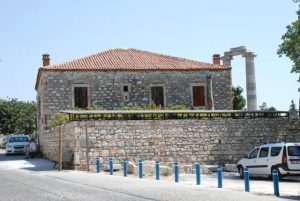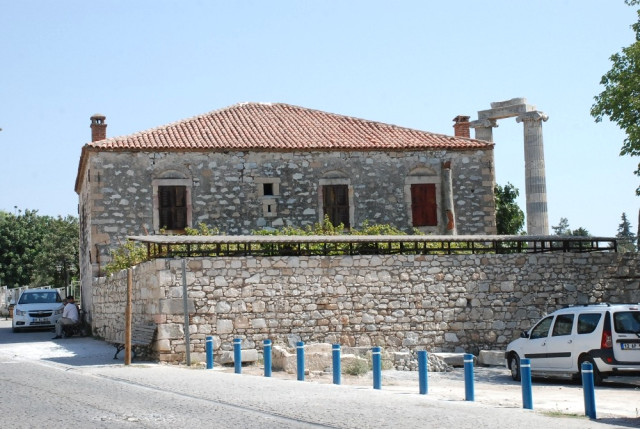Glenn Maffia’s response to plans for a ‘Museum House’ near the Apollo Temple
IT WAS while receiving a reply to a message I sent to a German archaeologist, prominent in the excavations around the Temple of Apollo for more than a decade, which clearly stated that, to the best of his knowledge, there has “never been any archaeology” in, around or beneath the house that has been designated as becoming Didim’s museum, that set off alarm bells in my head.
He continued, “If I remember right,” the director of excavations “wanted to dig there, but never did…”
Cultural naivety
This information, married to the news that the Ministry of Culture and Tourism are considering the application submitted by Didim Council to renovate this building for use as a small museum and the allocation of a grant of 90,000TL for the Council to proceed with this regrettable idea, is lamentable.
I have written to the Director of Excavations at the German Archaeological Institute for clarification on their “favourable response” claimed by the Council. I await their reply.
I am acutely aware these forlorn village houses were identified as ‘historic structures’, somehow, many years a far. Certainly before any of the revelations defined, described and espoused by recent archaeology.
These houses are identified by the blue plaque displayed upon an exterior wall with the word “Kume”.

The proposed house for the Museum
Many have illegally been modernised over the years with the use of concrete and breeze-block, in contravention to the guidelines set by the Ministry of Culture and Tourism.
The pervading village mentality of accepting an ‘historic’ classification then afflicted with the very deepest illiteracy when considering their obligation to building requirements is amiss. These are no longer ‘historic’ abodes.
Condescendingly quaint
While even if they were, assuredly, their ‘historic’ value has been eclipsed by the finds of the German archaeologists.
An insistence to recreate the Greek village may have its local motives though it is hardly going to attract inquisitive visitors to Didim. Whereas opening up the ancient Greek and Roman archaeology would have so many profound people flocking here.
These decisions lack the sensitivity required to administer an important archaeological site such as the Temple and its immediate environment.
The scheme envisaged for this unique site is cringingly coherent, even if, until now, it has hidden silently opaque; reconstruct a 19th century Greek peasant village (pretty and condescendingly quaint, as foreigners like to imagine ‘backward’ countries to be) and the less discerning will descend as bees to saccharine nectar.
That this “beautification” will bury 2,000+ years of historical importance is nothing more than a sacrifice to mass tourism.
Without context
The German Archaeological Institute has performed heroics in revealing the complex narrative sleeping merely a metre or so beneath our feet. For more than a decade it has been inspiring to realize that we walk upon footsteps that have shaped the linear passage of time to this present day.
I endeavoured to produce the map that would give vision to what the German’s have unveiled. It is not a particularly subtle allusion, far from it; rather it is an explicit statement that the entire vicinity surrounding the Temple is an archaeological entity in its own right.
Naturally, the Temple is the focal point, though its perspective is diminished by, presently, having no context.
Now paint the historical picture over this context. Little more than a cursory glance will show you that we have, here on our doorstep, the Persian-Greek Wars, Alexander’s edict to rebuild Apollo’s temple, the Oracle’s counsel to Diocletian for the persecution of the Christians, Constantine’s support for Christianity, Julian’s renunciation of Christianity and a brief return to paganism and finally Theodosius’ brutal eradication of paganism.
I ask you, is that scenario a tad more alluring than a reconstructed 19th century Greek peasant village?
Glenn Maffia
